Disclosure: This article contains affiliate links. We may earn a commission from purchases at no extra cost to you, which helps our travel content.
There's something magnetic about megacities – those sprawling urban giants that pulse with chaotic energy and contradictions. As someone who's spent years documenting the world's most intriguing urban spaces, I've developed a particular fascination with how cities move, breathe, and evolve. My recent back-to-back trips to São Paulo and Jakarta – two colossal metropolises separated by oceans but connected by similar urban challenges – offered a perfect opportunity to compare these titans of the Global South. Both cities house over 20 million people in their metropolitan areas, both struggle with infrastructure growing pains, and both reveal extraordinary resilience in their street-level innovations. Yet their approaches to urban life couldn't be more different. From elevated walkways to underground markets, from motorcycle taxis weaving through traffic to sleek new metro systems, these cities offer a masterclass in adaptation that any urban explorer should witness firsthand.
Getting Around: A Tale of Two Transit Systems
São Paulo's metro system feels like a revelation after you've spent days navigating its congested streets. Clean, efficient, and surprisingly punctual, it stands in stark contrast to the city above. I remember descending into República Station during rush hour, bracing for chaos, only to find an orderly flow of commuters and trains arriving with Swiss-like precision. The yellow line, in particular, with its modern cars and digital displays, wouldn't feel out of place in any European capital.
Jakarta's transit story reads differently. For decades, the city existed without any metro system whatsoever, relying instead on a patchwork of buses, minivans (angkot), and the infamous ojek motorcycle taxis. When I visited in 2019, I witnessed the birth of their MRT system – a long-overdue addition that locals spoke about with genuine pride. The stations gleamed with newness, and riders seemed to be treating the system with a reverence I rarely see elsewhere.
Both cities excel at informal transportation solutions. In São Paulo, I became addicted to the convenience of ride-sharing apps, which have been embraced with particular enthusiasm here. In Jakarta, nothing beats the ojek experience – hopping on the back of a motorbike and weaving through gridlocked traffic feels simultaneously terrifying and liberating. I quickly downloaded Grab (Southeast Asia's equivalent to Uber) which became my lifeline for navigating Jakarta's sprawl.
What struck me most was how both cities have developed parallel systems – official and unofficial, planned and spontaneous – that somehow work in concert. The businessman in a tailored suit hopping on an ojek in Jakarta or the São Paulo grandmother who knows exactly which unlicensed van will take her home fastest – these are the true urban navigators.
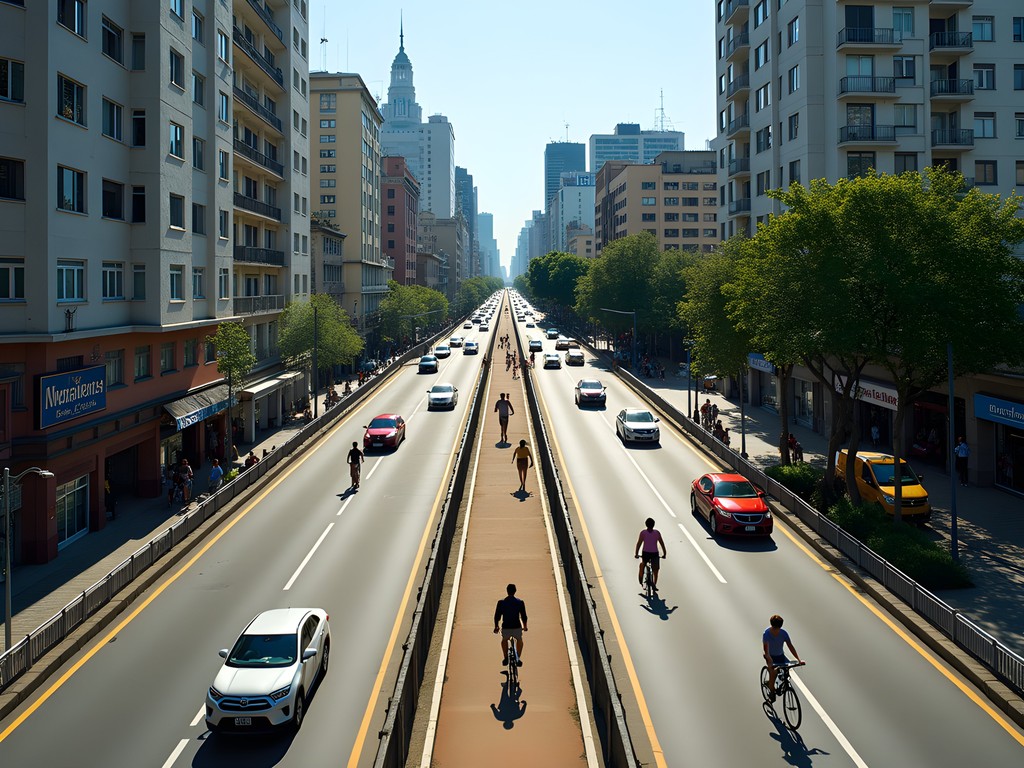
💡 Pro Tips
- In São Paulo, purchase a Bilhete Único card immediately – it works across metros, buses and trains
- Jakarta's GoJek and Grab apps are essential – they offer everything from rides to food delivery
- Both cities have ride-sharing options that locals use to create impromptu carpools – ask around for info
Street Food Cultures: From Pastel to Satay
Food reveals the soul of a city, and nowhere is this more evident than in the street food scenes of São Paulo and Jakarta. In São Paulo, my mornings typically began at a corner padaria (bakery) with a strong cafezinho and pão de queijo – those addictive cheese puffs that somehow taste even better when eaten standing at a counter. Lunch might be a quick pastel (crispy fried pastry) from the Mercadão municipal market, where the filling options seem endless.
Jakarta's street food operates on another level entirely. The city comes alive after dark, when food carts (kaki lima) emerge on nearly every corner. My first night there, I followed a local friend to a row of satay vendors in Sabang Street, where we perched on tiny plastic stools as skewers of marinated meat sizzled over makeshift grills. The peanut sauce alone was worth the 24-hour flight.
What fascinates me is how both cities have maintained vibrant street food traditions despite modernization. In São Paulo's financial district, suited executives still queue alongside construction workers for coxinha (chicken croquettes). In Jakarta's glitzy malls, food courts often feature local vendors who've been convinced to bring their street specialties indoors.
For documenting these culinary adventures, I relied heavily on my travel camera – its discreet size and excellent low-light performance made it perfect for capturing authentic food moments without disrupting the experience or drawing too much attention to myself.
The food safety conscious might worry, but my approach is simple: go where locals go, look for busy stalls (high turnover means fresh food), and bring a strong stomach. I've had some of my most memorable meals from vendors whose 'kitchen' consisted of little more than a cart and a portable gas burner.
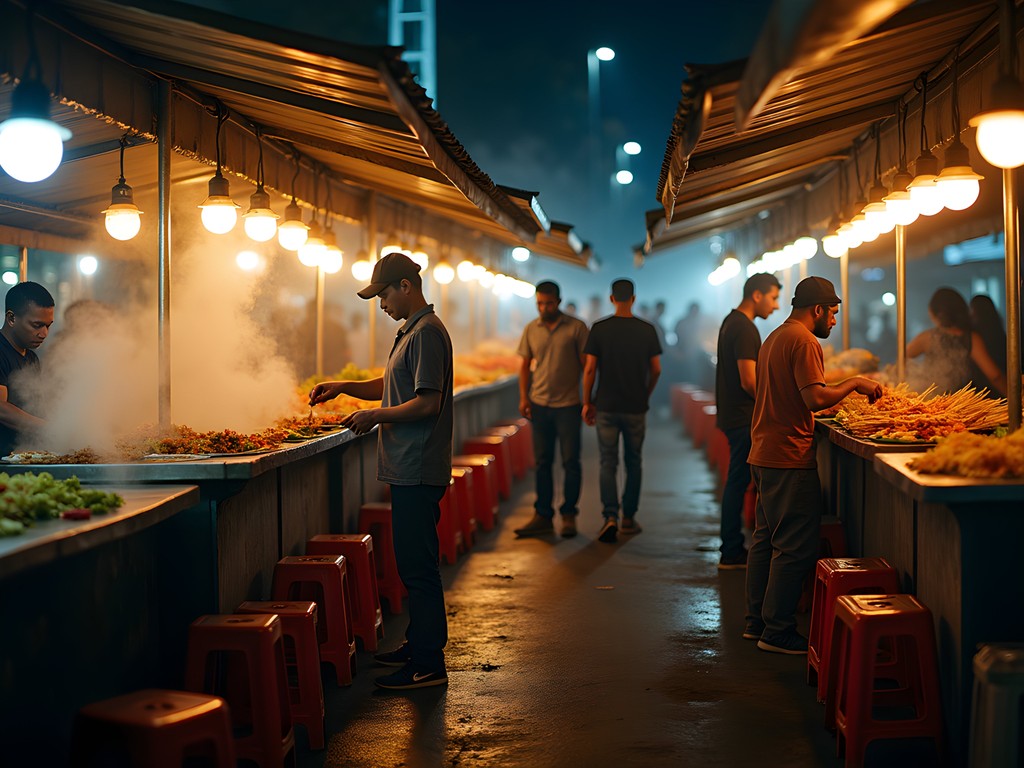
💡 Pro Tips
- In São Paulo, don't miss the municipal market (Mercadão) for the famous mortadella sandwich
- Jakarta's Glodok (Chinatown) area has some of the best street food concentrations in the city
- Both cities have excellent food tour options if you're nervous about exploring solo
Urban Architecture: Concrete Jungles & Hidden Gems
São Paulo's architecture hits you like a concrete tsunami – a seemingly endless ocean of high-rises stretching to every horizon. Yet within this apparent monotony lies remarkable diversity. The modernist masterpieces of Oscar Niemeyer and Lina Bo Bardi stand as bold statements of Brazil's mid-century ambitions. I spent an afternoon sketching at the MASP (São Paulo Museum of Art), marveling at how Bo Bardi's floating glass box design creates a public plaza beneath the museum itself – a democratic space in a city often criticized for its privatized public realm.
Jakarta presents a more chaotic architectural narrative. Colonial Dutch buildings in the old town (Kota Tua) crumble alongside gleaming skyscrapers and shopping malls. The city's architectural identity feels more fragmented, with less preservation of its historical layers. Yet there's beauty in this chaos too. The National Monument (Monas) rises from Merdeka Square like an exclamation point, asserting Indonesia's independence against the colonial backdrop.
What both cities share is a fascinating contrast between planned and unplanned development. In São Paulo, I wandered through Paraisópolis, one of the city's largest favelas, which sits directly adjacent to one of its wealthiest neighborhoods. The ingenuity of self-built structures – homes stacked upon homes, with creative solutions for everything from water collection to ventilation – demonstrates architecture born of necessity rather than design schools.
Jakarta's kampungs (urban villages) serve a similar purpose, though many are rapidly disappearing under development pressure. I was fortunate to explore Kampung Tongkol along the Ciliwung River, where residents have implemented their own flood mitigation strategies after years of government neglect.
For urban explorers, I recommend investing in a good urban exploration backpack that can carry water, camera gear, and urban essentials while remaining comfortable in hot, humid conditions. Mine has accompanied me through countless megacity adventures and never lets me down.
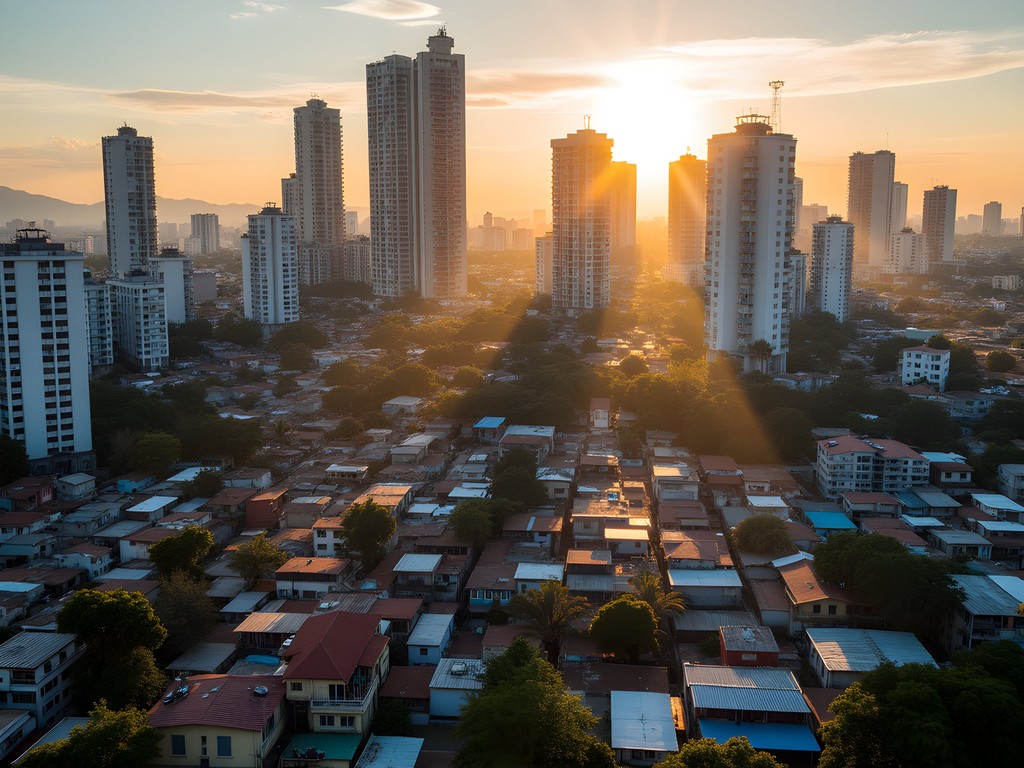
💡 Pro Tips
- São Paulo's architectural highlights are widely dispersed – plan your explorations by neighborhood
- Jakarta's old town (Kota Tua) is best visited early morning before the crowds and heat
- Both cities have excellent architectural walking tours led by local architects or students
Local Life: Finding Community in Chaos
Megacities can feel overwhelming, even dehumanizing at times. Yet paradoxically, both São Paulo and Jakarta maintain strong senses of community within their chaos. In São Paulo, I discovered this through its vibrant neighborhood markets. The weekly feira (street market) that appeared like clockwork outside my rental apartment in Vila Madalena brought the same vendors and the same neighbors every Sunday. By my third week, the fruit seller was setting aside the ripest avocados for me, and I'd developed a nodding acquaintance with at least a dozen local dog walkers.
Jakarta's community rhythms often revolve around its religious life. The call to prayer punctuates the day, temporarily slowing the city's frenetic pace. I found myself drawn to the quiet courtyards of neighborhood mosques, where the city's constant roar seemed to recede. One evening, breaking fast during Ramadan at a community gathering in Menteng, I experienced the warmth of Jakarta hospitality that completely contradicted the city's intimidating exterior.
Both cities have embraced technology as a community tool in fascinating ways. São Paulo's WhatsApp groups organize everything from neighborhood watches to bulk food purchases. In Jakarta, I was amazed by community flood alert systems operated entirely through Twitter and Telegram channels – residents upstream would warn those downstream about rising waters, often hours before official alerts.
To truly experience local life, I recommend venturing beyond tourist zones and seeking out ordinary neighborhoods. My travel notebook became invaluable for recording observations, sketching street scenes, and collecting recommendations from locals – sometimes communication happened through drawings when language failed.
The most memorable moments in both cities came from simple interactions – joining an impromptu football match in a São Paulo park, being taught how to properly eat durian by giggling Jakarta schoolchildren, or sharing an umbrella with strangers during sudden downpours (a common occurrence in both cities).

💡 Pro Tips
- Learn basic greetings in Portuguese and Bahasa Indonesia – the effort is always appreciated
- Both cities have excellent free walking tours run by locals proud to show their neighborhoods
- Sunday is family day in both cultures – parks and public spaces come alive with local activities
Urban Green Spaces: Nature Amid Concrete
One might expect massive concrete jungles like São Paulo and Jakarta to be devoid of greenery, but both cities have surprising oases that provide crucial breathing space for residents and visitors alike.
São Paulo's Ibirapuera Park stands as the city's green heart – a 390-acre masterpiece designed by landscape architect Roberto Burle Marx. On weekends, it transforms into São Paulo's communal backyard, with families picnicking, joggers circling the lakes, and cultural venues hosting everything from free concerts to art exhibitions. What impressed me most was how the park functions as a great equalizer – people from all walks of life sharing the same space in a city often criticized for its social divisions.
Jakarta's relationship with green space feels more complicated. While the city has fewer large parks, I discovered unexpected pockets of nature throughout my explorations. The Menteng district preserves colonial-era gardens, while the recently revitalized Taman Suropati offers a shaded refuge complete with public sculpture. Most fascinating were Jakarta's urban farming initiatives – community gardens tucked between high-rises where residents grow vegetables on what was previously waste ground.
Both cities are now recognizing the importance of urban greening beyond traditional parks. São Paulo's innovative vertical gardens on highway pillars and Jakarta's recent river restoration projects show how nature is being reintegrated into these dense urban environments. During my visits, I documented these initiatives extensively, believing they represent crucial adaptations for megacities facing climate challenges.
For serious urban explorers spending long days traversing these sprawling cities, I recommend carrying a reliable water filter bottle – it saved me countless times when quality drinking water wasn't readily available, especially during Jakarta's intensely humid days when staying hydrated is essential.
The most peaceful moments of my trips often came in these green spaces – watching São Paulo's sunset from the Vista Chinesa in Jardim da Luz or joining Jakarta residents for morning tai chi in Taman Mini Indonesia Indah, movements flowing as the city rumbled to life around us.
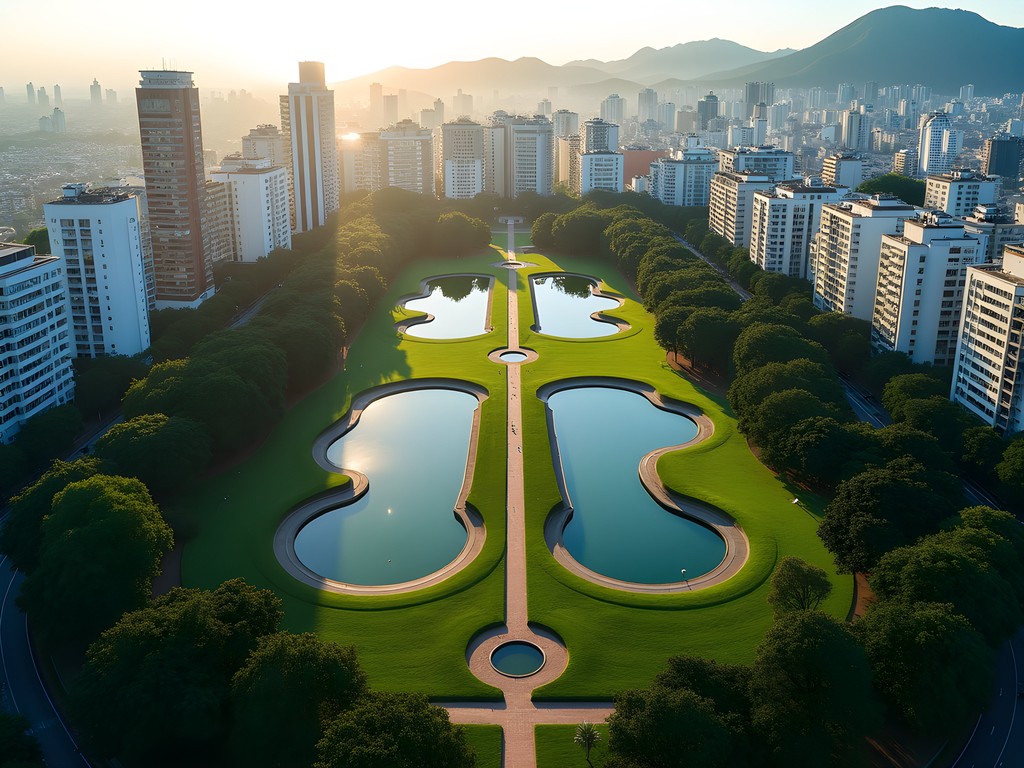
💡 Pro Tips
- Visit São Paulo's Ibirapuera Park on Sunday mornings when one side of the park road is closed to traffic
- Jakarta's Botanical Gardens in Bogor make an excellent day trip escape from the city center
- Both cities have rooftop gardens in unexpected places – ask locals for their favorite hidden spots
Final Thoughts
After two weeks in each city, I left with a profound appreciation for how São Paulo and Jakarta have evolved distinct urban personalities despite similar challenges. São Paulo feels like a city that's constantly reinventing itself while maintaining strong cultural traditions. Jakarta embodies resilience – adapting to environmental threats while preserving community connections amid rapid development. What struck me most was how residents in both megacities have created human-scale experiences within seemingly inhuman dimensions. The next time someone dismisses these urban giants as 'concrete jungles' or 'just stopover cities,' challenge them to look deeper. The true essence of these metropolises lives in their contradictions – where ancient traditions coexist with hypermodernity, where community thrives despite anonymity, and where the most rewarding discoveries often happen when you abandon the guidebook and simply follow the flow of local life. Whether navigating São Paulo's modernist canyons or Jakarta's vibrant kampungs, the urban explorer's greatest asset is curiosity – that willingness to turn down an unmarked alley or accept an impromptu invitation. These megacities don't just reward such curiosity – they demand it.
✨ Key Takeaways
- Both cities offer remarkable public transportation solutions worth experiencing – from São Paulo's efficient metro to Jakarta's motorcycle taxis
- Street food provides the most authentic window into local culture in both megacities
- The most memorable experiences come from venturing into residential neighborhoods away from tourist centers
- Urban green spaces reveal how residents have carved out nature within these concrete landscapes
📋 Practical Information
Best Time to Visit
Year-round, though São Paulo is best April-June and September-November; Jakarta is driest May-September
Budget Estimate
$80-150 USD per day including mid-range accommodation, local transportation, meals and activities
Recommended Duration
Minimum 5 days per city to explore beyond tourist areas
Difficulty Level
Intermediate


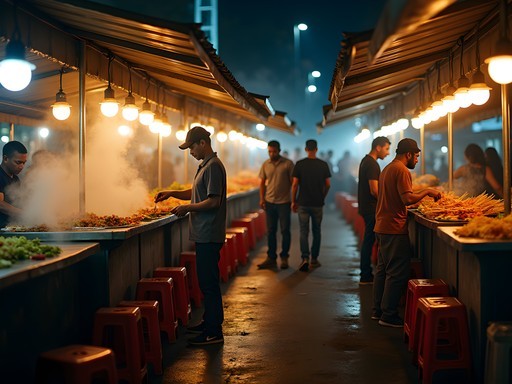
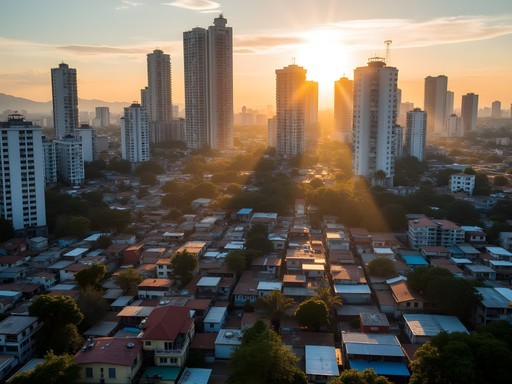
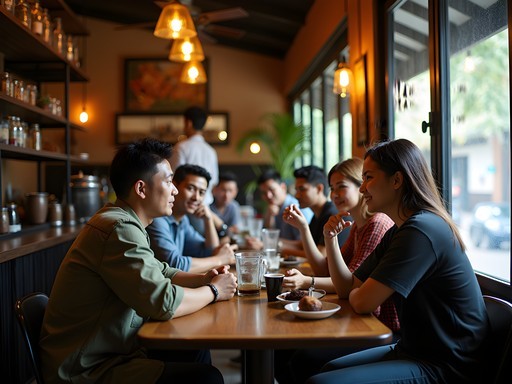
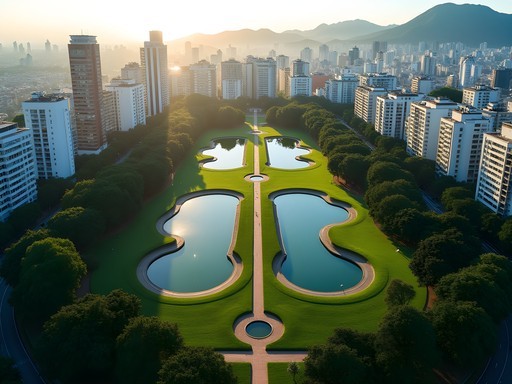


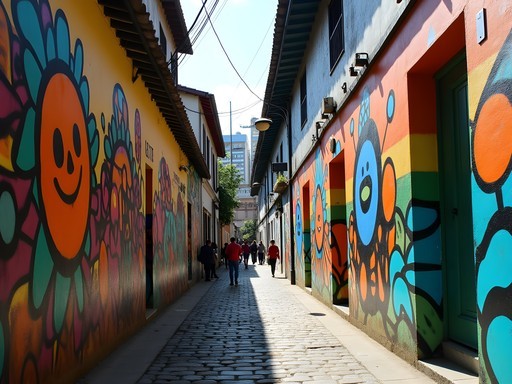
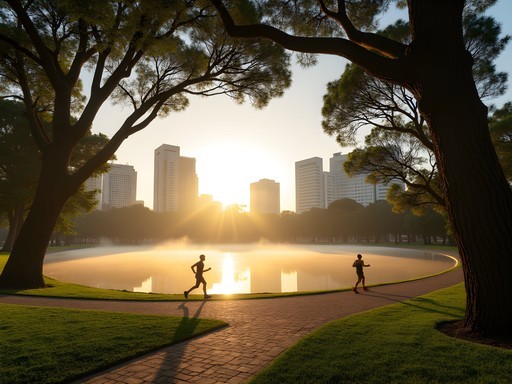
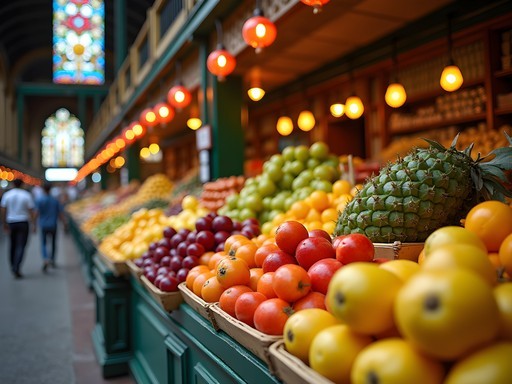
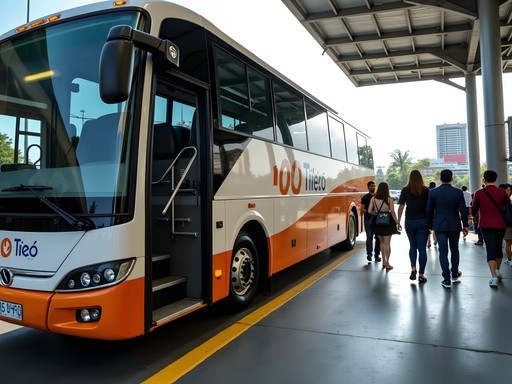
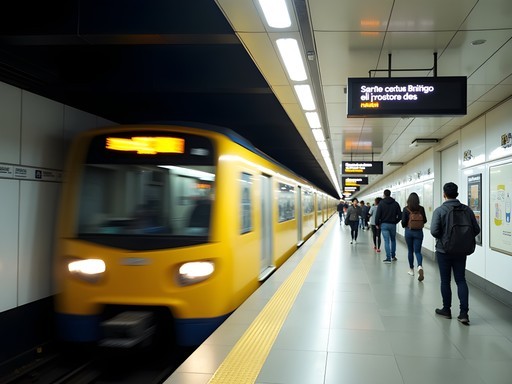



Comments
mountainlover
Those food pics made me hungry! The satay looks amazing!
explorechamp
Just booked my tickets! Which area would you recommend staying in São Paulo for someone who loves food and nightlife but doesn't speak Portuguese?
Jerry Kelley
Definitely Vila Madalena or Pinheiros! Great restaurants, bars, and more English speakers than other neighborhoods. Avoid Centro for your first visit.
explorechamp
Thanks! Just booked a place in Vila Madalena! Can't wait!
photo_enthusiast
Love that shot of Paulista Avenue! The contrast between modern buildings and the old art museum is stunning!
jakartajohn
Living in Jakarta for 3 years now, and your observations are spot on! One thing I'd add - the new MRT has really improved getting around central Jakarta, though it's still limited. For anyone visiting, I recommend staying in Menteng area for a more pleasant experience - walkable streets (rare in Jakarta!) and great food options. The flooding issues you mentioned are very real though - always check weather forecasts during rainy season (Oct-April). I use weather app which has been reliable for predicting Jakarta's sudden downpours. The street food scene here is incredible but be careful where you eat - look for busy warungs with high turnover.
Jean Wells
Good point about Menteng. I'd also suggest visitors try Kemang for a more expat-friendly area with interesting cafés and boutiques. Have you noticed improvements in the flooding situation with the recent infrastructure projects?
jakartajohn
Some improvement in central areas, Jean, but the underlying issues remain. The sea wall project helps but Jakarta's still sinking. The government's serious talk about moving the capital shows how difficult the problem is to solve completely.
urbanwanderlust
Just got back from SP last month! Pro tip: the Sesc Pompéia cultural center is amazing and totally free. Also, download Moovit app before going - saved me so many times with the bus routes!
megacity_hopper
Great post! Between the two, which city felt safer for solo travelers? Planning my first big trip and torn between these two!
Jerry Kelley
Both require standard urban precautions, but São Paulo's tourist areas felt more navigable for first-timers. The language barrier in Jakarta can be more challenging if you don't speak Bahasa Indonesia.
Megan Martin
Jerry, your comparison of these megacities is refreshingly nuanced. I documented Jakarta extensively last year and found the contrast between the gleaming skyscrapers and kampung neighborhoods fascinating. Your point about finding community amidst chaos resonates - I discovered some wonderful moments in Jakarta's hidden coffee shops where locals were incredibly welcoming. One thing I might add about São Paulo is its incredible art scene - beyond the obvious museums, the street art in neighborhoods like Cambuci and Vila Madalena tells powerful stories about Brazil's social landscape. Did you find the art scenes comparable between cities?
Jerry Kelley
Thanks Megan! You're absolutely right about SP's art scene - it's world-class. Jakarta's is emerging but more concentrated in specific gallery districts. São Paulo's street art culture definitely has deeper roots and more public presence. I was particularly impressed by the Batman Alley murals in Vila Madalena.
Jean Wells
Fascinating comparison, Jerry. Having spent considerable time in both cities myself, I appreciate your nuanced observations about their transit systems. São Paulo's metro efficiency versus Jakarta's organized chaos of ojeks and bajaj is indeed striking. One aspect I found particularly interesting was how both cities have adapted differently to similar challenges of population density and economic disparity. In São Paulo, the vertical growth seems almost defiant against its limitations, while Jakarta spreads horizontally despite the flooding issues. I documented similar observations in my series on urban adaptation in megacities last year. I'd add that São Paulo's Japanese neighborhood Liberdade offers another fascinating cultural layer worth exploring. Did you notice how both cities seem to have their own relationship with time? Jakarta's rubber time concept versus São Paulo's rigid scheduling?
travel_newbie
Jean, what's rubber time? Never heard that term before!
Jean Wells
It's the Indonesian concept of flexible time - 'jam karet' literally meaning 'rubber time.' Appointments are more fluid, unlike the punctuality expected in São Paulo's business culture.
explorechamp
This is exactly what I needed! Going to both cities next month and was stressing about how to navigate them. The transit comparison is super helpful!
Jerry Kelley
Glad it helps! Feel free to ask if you have any specific questions about either city.
explorechamp
Thanks Jerry! How many days would you recommend for São Paulo? I've got 5 days there - enough?
Jerry Kelley
5 days is perfect! Spend at least one in Vila Madalena for the street art, and don't miss Mercado Municipal for food sampling.
sunsetchamp6111
Which city had better nightlife? Going to Brazil next year!
journeydiver
Not Jerry but I can tell you São Paulo's nightlife is AMAZING. Vila Madalena has bars open till sunrise and the club scene in Barra Funda goes hard. Try Augusta Street for alternative vibes!
Venture X
Premium card with 2X miles, $300 travel credit, Priority Pass